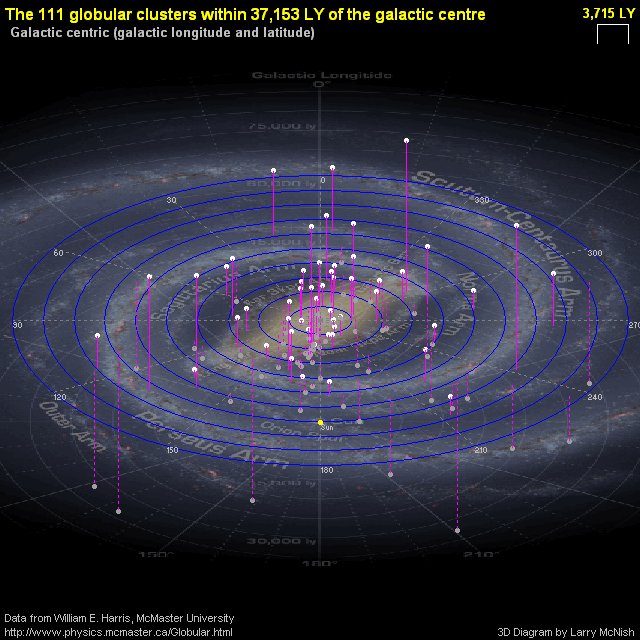To this day we don't have a picture of our home galaxy, from the outside. This is because it is so large that sending a probe far enough to grab the selfie would take far too long. If we can't see it from the outside then how do we know its size and our location within it?⬇️1/6 

Harlow Shapley, an American astronomer (1885-1972), began by studying the distribution of globular clusters (dense collections of ancient stars) in the sky. He noted that these clusters were not uniformly distributed, but instead were more concentrated in one part of the sky⬇️2/ 



Shapley used variable stars within these clusters to estimate their distances. These variable stars have an intrinsic (actual) brightness and apparent (what we see) brightness. By comparing the intrinsic and apparent brightness, Shapley estimated how far away they were.⬇️3/6
Shapley found that the clusters were distributed roughly in a sphere whose center lay in the direction of Sagittarius, far from the Sun's location. Shapley inferred this to be the center of the galaxy.⬇️4/6 

This was a revolutionary finding, as it contradicted the long-standing belief that our Sun was at the center of the Milky Way. Instead, Shapley's measurements placed the Sun about 50,000 light years from the galactic center, or about two-thirds of the way out from the center⬇️5/
Today, with more precise measurements, the accepted distance from the Sun to the center of the Milky Way is about 26,000 light-years. His estimate was a little off, but his conclusion that the Sun was not at the center of the galaxy was groundbreaking and fundamentally correct. 

Be sure to check out my previous tweet on how long it would take to travel to the center of the galaxy and back if traveling near the speed of light!
https://twitter.com/IoniaScience/status/1655098597589876737?t=xow5ymabotT13HNkik-_Qw&s=19
📸en.wikipedia.org/wiki/Milky_Way
📸nasa.gov/content/goddar…
📸researchgate.net/figure/Illustr…
📸calgary.rasc.ca/globulars.htm
📸commons.wikimedia.org/wiki/File:Ceph…
🤓britannica.com/biography/Harl…
#Science #Physics #astronomy
📸nasa.gov/content/goddar…
📸researchgate.net/figure/Illustr…
📸calgary.rasc.ca/globulars.htm
📸commons.wikimedia.org/wiki/File:Ceph…
🤓britannica.com/biography/Harl…
#Science #Physics #astronomy
• • •
Missing some Tweet in this thread? You can try to
force a refresh

 Read on Twitter
Read on Twitter







